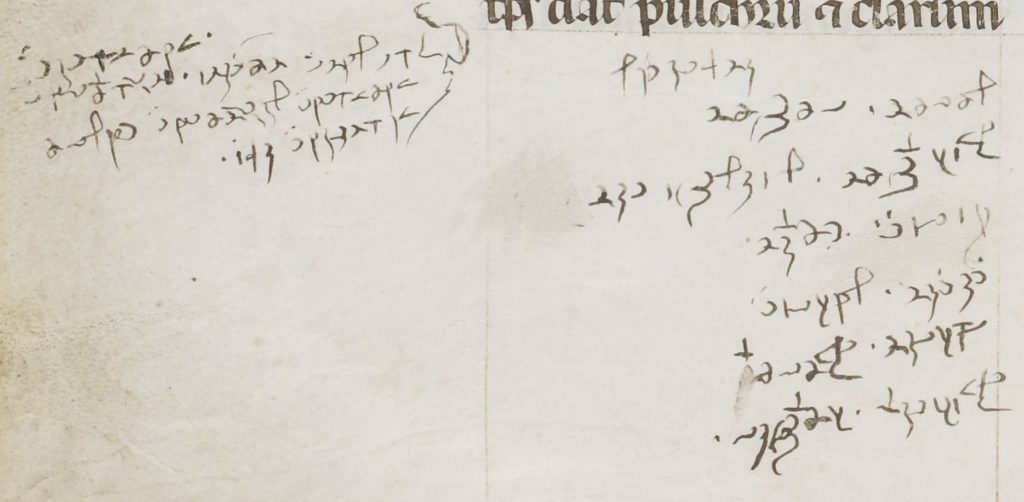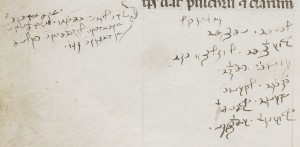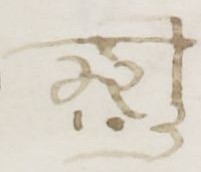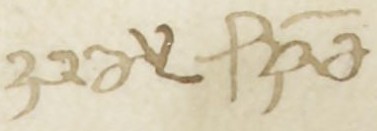A couple of weeks ago, I posted details of an interesting ciphertext I’d first blogged about back in 2009 (based on some photocopies of photographs taken decades ago by the Warburg Institute that I’d seen back then). It was in the margins of BNF Cod. Fonds Latin 7272, in the section containing a book on judicial astrology by Genoese nobleman Andalò di Negro: and so I dubbed it the “Paris 7272 Cipher”.
When (some seven years later) I returned to the cipher, I found that the BNF had made scans of it available via their excellent gallica.fr website: from these I was able to extract good quality images and build up a complete set of the ciphertext fragments on a page at the Cipher Foundation.
Back on Cipher Mysteries, I pointed out that even though there appeared to be numerical fractions, there were in fact some repeated words (which suggested that it was a simple cipher): and that, somewhat unusually, the ciphertext appeared to have been written right-to-left. In a comment to that page, Philip Neal then pointed out that many of the marginalia coincided with discussion of the twenty-eight mansions of the moon in the main text: and suggested that the two might therefore be linked in some way.
Marco Ponzi
Nicely, Marco Ponzi was then able to weave all these observations together with his Latin and astrology knowledge to (mostly) crack the cipher, and posted his findings as a comment on Stephen Bax’s site. I’ve since checked that he got it right: and yes, Marco basically nailed it.
The Paris 7272 cipher has plenty of unusual features that make it tricky to recognize as a ciphertext: not only was it written right-to-left, the top half of the fraction-like shapes was the letter “L”, with the plaintext vowel following it placed immediately beneath it – and because many of the cipher shapes used for vowels resembled Arabic numbers, this made them visually resemble fractions. Also somewhat awkwardly for would-be decryptors, several enciphered letter-shapes are very similar (“n” and “o”, and “m” and “c”). All of these aspects together formed quite an effective first layer of disguise, one of steganography rather than of cryptography per se.
Moreover, the writer has also used the common European trope of placing a line over text to denote a nasalization and/or an omitted ‘n’ as part of the ciphertext, which makes it hard to read in places even if you do happen to know its alphabet. And the writer also had quite scrappy writing in places, which also didn’t help. Had the encipherer avoided the mistake of repeating planet names as free-standing words, I suspect Marco could well have had great difficulty decrypting it: it wasn’t easy.
Zodiac Angel Names
Over the last few days, I’ve pursued Marco Ponzi’s decryption a little further, with some success. The very first piece of marginalia (on 112r) now appears to be:
i.e. NOMEN ARIETIS SOLICET ANGELUS EIUS (EST) “SORON”
(The dots either side of SORON seem to me to indicate some kind of quotation marks, which I have transcribed accordingly. Of course, anyone who has read any Tolkien may well read this out loud and find themselves somewhat bemused. But the similarity to “SAURON” is no doubt just a coincidence.)
Even though I’m not at all sure what “SOLICET” means in this specific instance (and the ‘O’ was misenciphered as ‘N’, and the ‘C’ looks similar to a ‘T’, etc), it seems reasonably clear to me that (as a whole) this line is intended to disclose the secret name of the angel for Aries: “SORON”. Even if this name appears in some other astrological, magical, or necromantic text, it would appear to be extremely rare: this was therefore very probably a genuinely secret thing for the encryptor.
Similarly, we also find on subsequent pages:
NOMEN ANGELUS TAURA (EST) “TOION”
NOMEN ANGELUS JEMINORUM (EST) “SAISIACIN” GADLIO[N]I
NOMEN ANGELUS CANCRI (EST) “BARAM” — (Note that I’m not yet 100% sure of the Y-like “B” in “BARAM”)
NOMEN ANGELUS LEONIS (EST) “COLIN”
(Which will perhaps come as a surprise to anyone called Colin.)
JISU (EST) NOMEN NI SATURNI ET EIUS CIRCULA(TE)O (?)NIUM CIRCULORUM
…which I’m sure Latinists will be able to sort out more clearly.
Interestingly, there appears to be some kind of signature on this page. Given that (a) it appears to be in 15th century handwriting, (b) the manuscript with these marginalia was in the Aragonese court in Naples until 1495, and (c) the subject matter is clearly astrology, I went away and had a brief look for 15th century Neapolitan astrologers.
Angelo Catone (~1440-1496) and Lucio Bellanti are good candidates, though both perhaps slightly too late in the 15th century. My own current best guess is that the signature will turn out to be that of the astrologer Bartolomeo Sibilla, though perhaps others better acquainted with the sources will be able to say if there are any extant holographs or known marginalia by Bartolomeo Sibilla that we might compare this 143r signature with.
As to the secret angel names of the other zodiac signs, on 112v the author lists the abovementioned angels and a few more, though with fairly scrappy writing so that it’s quite hard to be sure:
On the right hand side:
IN?TIUS
SORON TOION
GADLION SAISIACIN
BARAM COLIN
MIMIN SUDRAM
TEDUO GORO(?)
UDABUL DOLI?IT
On the left hand side:
DUODECIM
ET SUNT NOMENA ANGELORUM
DUODECIM SIGNO ?UC CURSO
(P)ENTIUM
…which I’m (again) sure clever Latinists far more able than me will be able to resolve satisfactorily.
Anyway: that’s quite enough techy decryption stuff for a single post, so I shall return to the second (mansions of the moon) part of the Paris 7272 ciphertext in a future Cipher Mysteries post…










